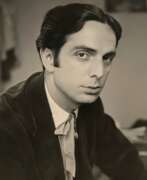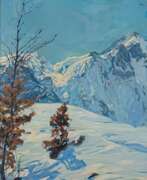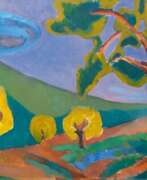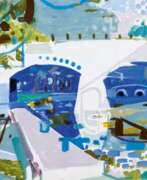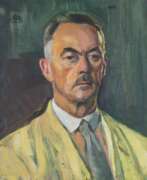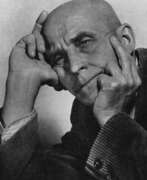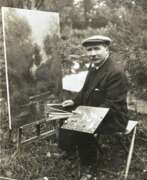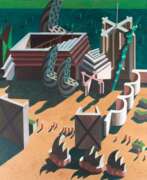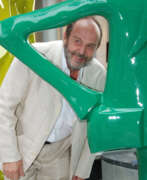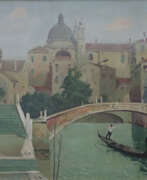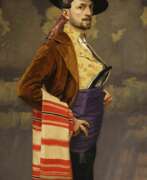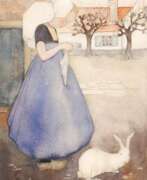Draftsmen Modern art
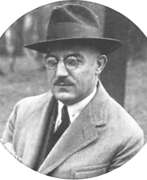

Fritz Baumgarten was a German illustrator.
He illustrated countless children's books in light pen works, coloured richly and very painterly with watercolours. His style was very modern, loose and impressionistic, but still with strong roots in life-drawing, animals drawing and academic composition.
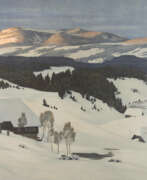

Karl Biese was a German landscape painter, draftsman, and lithographer. After initially working as a theater painter, he received a scholarship to study at the Karlsruhe Academy of Fine Arts in 1883. Biese later returned to Hamburg, where he became a master painter and established his own business. Biese was one of the founders of the Karlsruhe Artists' Association and created lithographs for the association's print workshop. He found inspiration for his nature-themed works during his travels around Karlsruhe, the Black Forest, the Moselle region, and northern Germany. Biese was particularly known for his atmospheric paintings, especially his winter scenes. He primarily worked with oil painting and lithography mediums. Biese also designed collectible images for Stollwerck chocolate company's albums.
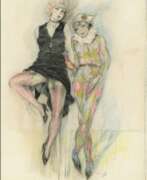

Edouard Chimot was a French Art Deco painter, illustrator and editor.
Edouard studied at the Ecole des Arts Décoratifs in Nice and then at the Ecole des Beaux-Arts in Lille. After the war, he was able to prove himself as an illustrator and master publisher. At the height of the Art Deco heyday, Chimot received a number of commissions to illustrate books with his original engravings, the first of which was the rare book Les Après-Midi de Montmartre with fourteen engravings by Chimot.
In 1920, Édouard Chimot founded his own publishing house, Éditions d'Art Édouard Chimot. Through this venture, he not only continued to create his own art, but also collaborated with other artists and writers to create high quality limited edition books, often with his distinctive illustrations. Édouard Chimot was associated with late Symbolist and decadent culture, and his own work is sometimes referred to as post-Symbolist. His collaborations with famous writers and poets, including Paul Verlaine and Charles Baudelaire, brought his illustrations to the forefront of the Art Nouveau movement.
With the collapse of the financial system in the early 1930s in Europe, the demand for luxury products also fell, but the artist continued to work, produce books and paint. Chimot's artistic style is characterized by sensuality and romanticism. He was an artist of the female figure, style, eroticism and embodied the essence of Art Deco imagery.


Plinio Colombi was a Swiss painter and graphic artist. For his paintings he often chose landscape motifs of the Lake Thun region and also painted still lifes. His works include prints, paintings, etchings, aquatints, lithographs, woodcuts, drawings, and posters.
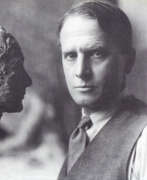

Ernesto de Fiori was a German artist of the first half of the twentieth century of Italian-Austrian origin. He is known as a sculptor, draughtsman, and secular portraitist and is considered one of the leading artists of the Weimar Republic.
Ernesto de Fiori made a name for himself as a sculptural portraitist in Berlin during the so-called "Golden Twenties". He portrayed such celebrities as movie actresses Greta Garbo and Marlene Dietrich, boxer Jack Dempsey, Field Marshal Paul von Hindenburg. In 1936, the artist emigrated to Brazil and took up journalism. In 1937, the Nazi campaign to expose "degenerate art" led to the removal of his sculptures and graphics from German museums.
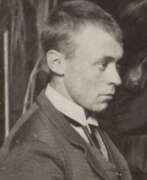

Pieter Cornelis de Moor, a Dutch artist, stands out as a versatile and innovative figure in the art world. His education at the Academy of Visual Arts in Rotterdam and the Drawing Academy in Antwerp laid the foundation for a career marked by diversity and creativity. De Moor's achievements, including a silver medal in the Prix de Rome in 1887, underline his early recognition and the promise of his artistic journey.
De Moor's artistry was not confined to a single medium; he was adept in drawing, etching, painting, watercolor, producing lithographs, and working as an illustrator. His artworks, ranging from "Dancing Women" to "Poultry on a Yard" and "An Elegant Lady Feeding Peacocks," showcase his broad thematic interests and technical skills. Notably, his works are held in prestigious collections, including the Rijksmuseum and the Dordrechts Museum.
The artist's life was rich with experiences, having worked across Europe and eventually settling in the United States. His legacy, punctuated by exhibitions in museums such as Museum Boijmans Van Beuningen and the Drents Museum, continues to captivate art enthusiasts and collectors.
For collectors and art experts, delving into the works of Pieter Cornelis de Moor offers a unique glimpse into the evolution of Dutch art. His contributions, particularly in the realm of Symbolism, highlight an era of artistic exploration and innovation.
Stay informed about new product sales and auction events related to Pieter Cornelis de Moor by signing up for updates. This subscription is your gateway to the latest acquisitions and opportunities in the world of this distinguished artist.
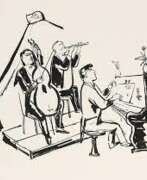

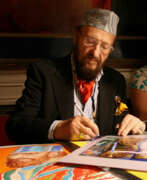

Ernst Fuchs was an Austrian painter, draftsman, printmaker, sculptor, architect, stage designer, composer, poet, and one of the founders of the Vienna School of Fantastic Realism. In 1972, he acquired the derelict Otto Wagner Villa in Hütteldorf, which he restored and transformed. The villa was inaugurated as the Ernst Fuchs Museum in 1988.
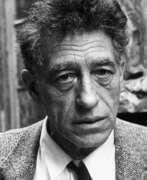

Alberto Giacometti was a Swiss sculptor, painter, draftsman, and printmaker, renowned for his distinctive elongated sculptures of solitary figures. Born in Borgonovo, Switzerland, in 1901, into a family of artists, Giacometti's talent was evident from an early age, encouraged by his father, Giovanni, a post-Impressionist painter, and his godfather, Cuno Amiet, a Fauvist painter. Moving to Paris in 1922 to study under the sculptor Antoine Bourdelle, Giacometti became a pivotal figure in Surrealism before focusing intensely on the human form, leading to his signature style of thin, elongated figures that evoke feelings of solitude and existential dread.
Giacometti's work spans several decades and various phases, including his early involvement with Surrealism and his later, more recognized existential and figurative sculptures. Notably, his sculptures, such as "Walking Man I" and "The Palace at 4 a.m.," reflect his unique view of reality and his relentless pursuit to capture the human essence. His approach was influenced by his associations with prominent figures of the art world, including Miró and Picasso, and intellectuals like Jean-Paul Sartre.
Despite facing challenges, including periods of self-doubt and the physical toll on his health, Giacometti's legacy as a master sculptor and artist remains influential. His works are celebrated worldwide and featured in major museums, such as the Museum of Modern Art in New York and the Tate Gallery in London, testament to his enduring impact on the art world.
Collectors and experts in art and antiques continue to revere Giacometti's work for its emotional depth and unique aesthetic. For those interested in the pioneering spirit of modern sculpture, Alberto Giacometti's oeuvre offers a profound exploration of the human condition and the artist's relentless pursuit of reality through art.
To stay updated on sales and auction events related to Alberto Giacometti's work, sign up for updates. This subscription is an excellent opportunity for collectors and enthusiasts to remain informed about new discoveries and opportunities related to Giacometti's enduring legacy.
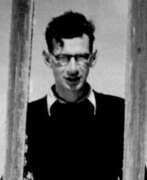

Rudolf Grossmann (German: Rudolf Grossmann, or Großmann), full name Rudolf Wilhelm Walther Grossmann, was a German painter, draftsman, illustrator and graphic artist.
Born into an artistic family, Grossmann began his education in painting and printmaking at the Düsseldorf Academy before continuing his studies in Paris with Lucien Simon and Pouleroz. Among his best-known works are various portrait drawings of celebrities, notably those published in the satirical periodical Simplicissimus; he was also known for his book illustrations. Grossmann began publishing his prints in 1905, and many major publishers in Germany and France commissioned his work. He later concentrated on figurative works and urban scenes, which showed the influence of Cézanne and Pasquin.
From 1928 until Hitler's Nazi Party came to power, Grossmann taught at the Berlin Royal School of Art and was a member of the Berlin Secession and the Deutsche Kunstlerbund. In 1934, his work, like that of many of his colleagues, was stigmatized as degenerate and confiscated by the Nazi government, and he was disbarred from practicing his profession. He soon left for Freiberg im Beisgau, where he died on November 28, 1941.
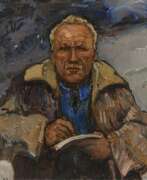

Rudolf Gudden was a German painter and draftsman, a pioneer of German modernism, and a member of the German Artists' Association.
He received his art education at the Munich Academy and at the Academy of Karlsruhe. Gudden painted landscapes, portraits, and everyday scenes in the then-new Art Nouveau style.
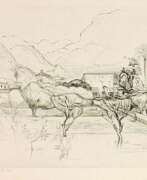

Friedrich Leonhard Heubner was a German commercial artist, painter, draftsman and illustrator. In 1914 he was a founding member of the artist group The Six. In 1916 he was represented in the Ernst Arnold Gallery at the "Second Exhibition of Dresden Artists Who Are in Army Service". From 1920 he was a member of the Munich Secession and regularly exhibited there. Heubner quickly freed himself from Munich Art Nouveau and developed his own sweeping style of drawing. There were caricatures for the youth, the gazebo and the Simplicissimus. Heubner first appeared as a poster designer. In the 1920s he turned more to book illustration and created etchings and lithographs. In his paintings of the 1920s, which he created primarily while traveling, he came to an expressive view of the landscape. His drawings, which show the destroyed Munich and its reconstruction from 1945 onwards, are of cultural-historical importance, many of which are now in the collection of the Munich City Museum.
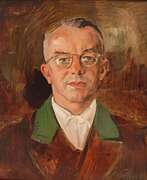

Peter Hirsch is a German painter, graphic artist and draftsman as a child private lessons in painting, apprenticeship as a lithographer, studied at the Munich Academy. He loaded exhibitions in the Munich Glass Palace and in the Kunstverein, ostracized as "degenerate" in Germany 1933-45 partly active in the USA, Canada, the Netherlands, Italy, England, France, Hungary and Switzerland, from 1944 temporarily relocated to the Schliersee, before 1930 -1969 lecturer at the Munich Adult Education Center.
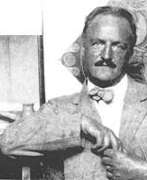

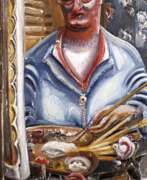

Paul Kleinschmidt was a German painter, graphic artist, engraver, and draftsman.
He studied at the Berlin Academy and at the Academy in Munich, where he studied the techniques of lithography and etching. Kleinschmidt created many etchings and lithographs in the modernist style and is also known for genre images of people having fun in restaurants.
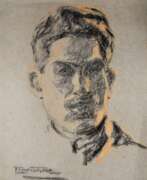

Fernand Lantoine is a French painter and draughtsman, often associated with the Belgian School.
Without adhering to all the artistic innovations of his time, he constantly developed his painting technique.
This evolution is related to the deep need for renewal in European societies, highly civilised and industrialised but scarred by the horrors of war.
A close friend of Paul Signac, he moved from the neo-impressionist movement with divided brushstrokes and bright, almost fauvist tones, to a symbolist inspiration close to Henri Martin, before opting for a style marked by the pre-eminence of line and structure over colour.
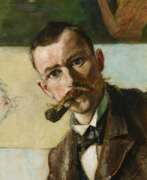

Carl August Liner was a Swiss painter, graphic artist, designer and inventor. He is sometimes referred to as Senior to distinguish him from his son, Carl Walter Liner, who was also a well known painter.
In addition to his paintings, he designed postage stamps and posters and did illustrations. It was this work that provided most of his income. He was also an amateur inventor and holds the patent for an early version of the single-axis mower.


Fritzi Löw (German: Fritzi Löw, also Friederike Löw) was an Austrian artist and outstanding illustrator.
She trained at the Vienna School of Applied Arts, then worked as a designer in the Vienna workshop, where she made wallpaper, fashionable fabrics and carpets, glass paintings, and ceramics. From 1917 to 1923, Fritzi Löw created lithographs for Anton Schroll's publishing house and was a member of the "Wiener Frauenkunst"; many fairy tale and storybook editions were decorated with her illustrations.
In 1938 Fritzi Löw emigrated to Brazil with stops in Denmark and England, where she worked as a furniture designer, and returned to Vienna in 1955.
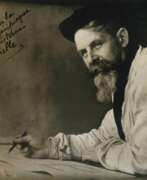

Louis Majorelle was a prominent French artist, cabinetmaker, furniture designer, and a leading figure of the Art Nouveau movement. Trained initially as a painter, Majorelle shifted focus to furniture design, taking over his family's business and emerging as a dynamic force within the École de Nancy.
Louis Majorelle was instrumental in the Art Nouveau style's development, known for his innovative and nature-inspired designs. He was one of the founding members of the École de Nancy, a collective that aimed to promote Lorraine's decorative arts. Louis Majorelle's work, particularly in furniture and interior design, showcased his skill in integrating natural forms with functional pieces. His use of materials such as mahogany and his incorporation of floral and organic motifs were distinctive of his work. Notably, Majorelle's Nénuphar bed, displaying water lily motifs, stands as a testament to his design philosophy and can be seen at the Musée d'Orsay in Paris.
The Villa Majorelle, his own residence in Nancy, serves as an embodiment of Art Nouveau architecture, featuring intricate ironwork and woodwork crafted by Louis Majorelle himself. This house not only served as his home but also as a beacon of Art Nouveau's architectural potential, showcasing the movement's aesthetic in a living environment.
For collectors and experts in art and antiques, Louis Majorelle's work represents the pinnacle of Art Nouveau's embrace of naturalistic designs and the seamless blend of art and craftsmanship. His contributions to the movement have left an indelible mark on the history of decorative arts.
To stay informed about new discoveries and interpretations related to Louis Majorelle and his era, signing up for updates is highly recommended. This subscription will ensure you're alerted to new product sales, auction events, and exhibitions related to this significant figure in art and design history.
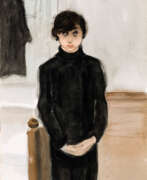

Jeanne Mammen was a twentieth-century German artist. She is known as a graphic artist and draftsman, a representative of modernism, a prominent figure in the artistic life of the Weimar Republic.
Jeanne Mammen developed an artistic style close to the New Materialism school. As she grew older, her work became more symbolic; after 1945, the artist moved towards abstractionism. She worked for fashion magazines, created movie posters, and illustrated erotic poetry. Mammen actively developed collage techniques, as well as creating portraits and caricatures, and sketching street types.
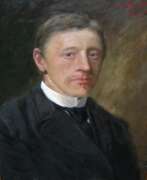

Karl Otto Matthaei was a German painter, draftsman and graphic artist. He completed his training from 1891 to 1900 at the Grand Ducal Academy of Fine Arts in Karlsruhe, which was one of the leading landscape school in Germany. His first teacher was Franz Hein from Altona. His first study trips took him to the Karlsruhe area. Around 1894 he lived in the Grötzinger painters' colony in an artist community. In 1895, art students from Karlsruhe founded an artists' colony in Duhnen, Altenwalde and Altenbruch (Cuxhaven), of which Karl Otto Matthaei was a founding member. Karlsruhe was Matthaei's official place of residence until 1916, although this was regularly interrupted by his annual study and painting visits to the North Sea and the Lower Elbe region. He then moved his residence to Bremen. Matthaei was chairman of the Bremen Artists' Association for many years and was made an honorary member in 1924. In 1930 he was appointed Honorary President of the Association of Northwest German Artists.
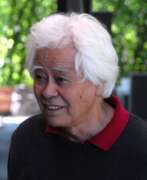

Osamu Nakajima is a Japanese-Austrian sculptor of Asian modern and contemporary art. He is one of the first artists who were able to realize pure abstraction for sculptures in public space. His monochrome stone sculptures are based on basic geometric forms and rational principles of order, which, however, find new and unusual solutions.
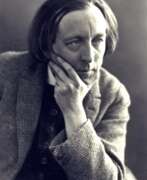

Charles-Clos Olsommer was a Swiss painter and draftsman of French descent. His favorite subjects were women's portraits and landscapes. He was a mystical and symbolic painter, and Olsommer's art echoed the Italian Early Renaissance, icon painting, and Art Nouveau aesthetics.


Günter Schöllkopf was a German draughtsman, graphic artist and painter. He drew his pictorial ideas primarily from the fields of world literature, music, history and politics. When he died at the age of 44, he left behind a body of work of about 1000 works.


David Roland Smith is an American sculptor and expressionist painter.
Smith became known as the creator of large-scale steel geometric sculptures in an abstract style inspired by the works of Picasso.
But Smith is also a prolific painter-drawer; he drew all his life, making hundreds of drawings a year. His subjects included various figures and landscapes, a series of nudes, and he also drew almost calligraphic signs with egg yolk, Chinese ink and brushes.
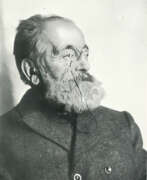

Marc-Louis-Emmanuel Solon, pseudonym Miles, was a renowned French porcelain artist. After beginning his career at the Sèvres Porcelain Factory, he moved to Stoke-on-Trent in 1870 to work at Mintons Ltd, where he became the leading exponent of the technique of ceramic decoration called pâte-sur-pâte. His work commanded high prices in the late Victorian period.
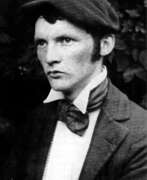

Heinrich Vogeler was a German artist and philosopher, a representative of the German Art Nouveau. A versatile and talented artist, he painted, watercolored, composed poems, designed, designed and decorated. Over time, his style of art changed over a wide range.
During World War I, from 1914 to 1917, Vogeler was on the Eastern Front as a volunteer and made sketches, which resulted in his pacifist sentiments.
In the mid-1920s he visited the Soviet Union several times and his impressions resulted in paintings in his own "complex style: "Karelia and Murmansk" (1926), "Building a New Life in the Soviet Republics of Central Asia" (1927), and "Baku" (1927). In 1931 Vogeler received an invitation to work in the USSR. The coming to power of the Nazis in Germany made it impossible for him to return home, and after Hitler's invasion Vogeler among many was deported to the Kazakh SSR, where he died.


Fritz von Wille, real name Friedrich Gustav August Julius Philipp Rudolf von Wille is a German painter, member of the Malkasten group.
Fritz von Wille is known for his landscapes in the Impressionist style. To avoid confusion with his father, the painter August von Wille, he took a short name. His son Otto (1901-1977) also became a painter.
